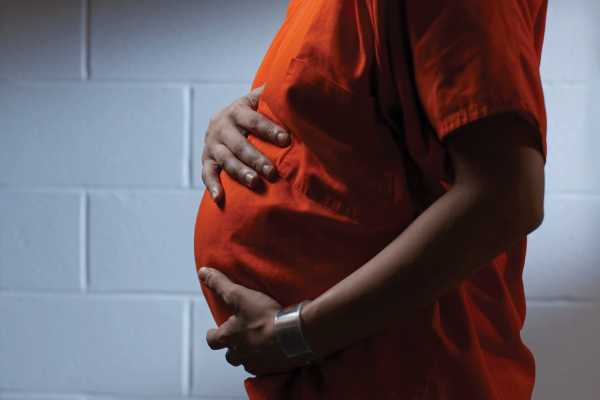KADIJA CLIFTON LEARNED she was pregnant with her second child while being booked at a Maryland county jail. She had no idea that she was expecting. She was halfway through her pregnancy before she got her first ultrasound. On that day, two armed sheriffs escorted her to the medical facility with her wrists cuffed in front of her belly. A female correctional officer sat in the corner of the room while she was being examined. Clifton felt she had no privacy — “it was invasive and not fun at all.”
Clifton, who has been out for several years and is raising her son with her parents’ support, recalls that she spent the rest of her pregnancy in the county jail worrying about the health of her unborn child. She was already anxious about leaving her then 5-year-old daughter to be raised by her ex. The news of the pregnancy made things even more complicated.
“During those months I remember simply wanting a comfortable place to sit, versus plastic chairs or stools with no back support. I was seriously pregnant,” says Clifton. “Then there was the food, or lack of it. You have a limited amount. You get three meals a day, and if you are pregnant, it is just not enough.” Luckily, by the time Clifton was due, she was able to pay the bail bond and was awaiting trial at home.
I first met Clifton at a graduation ceremony in Alexandria, Va., for Together We Bake, a workforce training program. Clifton shared her life story in front of a handmade collage while hugging her then-5-year-old son. She had completed a 10-week training, learning about food safety, business administration, job readiness, and other critical life skills. Two months later, she became a senior adviser to a podcast on reentry I was producing at the time. Clifton now works as a night supervisor in a facility that hosts at-risk LGBTQI+ youth. Her daughter, now 14, still lives with her dad, but she and Clifton speak regularly.
Read the Full Article

